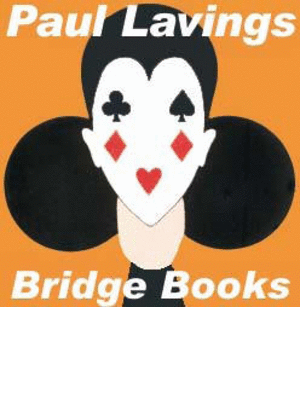
Source: Australian Bridge Federation Newsletters
Whether to play 1 =2+ OR 1
=2+ OR 1 =3+ (better minor)
=3+ (better minor)
1 showing 2+ clubs has always had a good following, but it fails to stand up under close analysis.
showing 2+ clubs has always had a good following, but it fails to stand up under close analysis.
Consider this hand, and focus on the shape 4-4-3-2:  A864,
A864,  A765,
A765,  J54,
J54,  K6
K6
This exact shape, four spades, four hearts, three diamonds and two clubs is the only hand where you open 1 with three diamonds, playing better minor. Now look at these sequences when you open 1
with three diamonds, playing better minor. Now look at these sequences when you open 1 in better minor:
in better minor:
1 -1 -1 |
1 -1 -1 |
1 -1 -1 |
| 1NT | 1 |
1NT |
When you open 1 you will have only three diamonds if you are 4-4 in the majors (exactly 4-4-3-2). In these sequences you cannot be 4-4 in the majors or you would raise partner’s major to 2
you will have only three diamonds if you are 4-4 in the majors (exactly 4-4-3-2). In these sequences you cannot be 4-4 in the majors or you would raise partner’s major to 2 or 2
or 2 at once. Thus the partnership knows after opener’s rebid how many diamonds opener holds, whether it be 3 or 4+. And it can only be three exactly if the bidding proceeds
at once. Thus the partnership knows after opener’s rebid how many diamonds opener holds, whether it be 3 or 4+. And it can only be three exactly if the bidding proceeds
1 -1 -1 |
1 -1 -1 |
2 |
2 |
In which case it doesn’t really matter, since you’ve found your major suit fit. So opening 1 with 3+ is not so damaging. It is nice to know opener has 4+ diamonds at the point when they open 1
with 3+ is not so damaging. It is nice to know opener has 4+ diamonds at the point when they open 1 , but you can still make a preemptive raise (1
, but you can still make a preemptive raise (1 – 3
– 3 ) or raise diamonds in competition with five-card support.
) or raise diamonds in competition with five-card support.
Strangely this exact shape, four spades, four hearts, three diamonds and two clubs is also the only hand where you open 1 with two, playing 1
with two, playing 1 = 2+. However, if you open 1
= 2+. However, if you open 1 with 2+, you create all sorts of problems for yourself around the club suit. In many cases, you tie your own hands behind your back; for instance it becomes a risk to raise preemptively to 3
with 2+, you create all sorts of problems for yourself around the club suit. In many cases, you tie your own hands behind your back; for instance it becomes a risk to raise preemptively to 3 with only five-card support and to bid 3
with only five-card support and to bid 3 in this sequence with only five card support may find you in a seven-card fit:
in this sequence with only five card support may find you in a seven-card fit:
 K2,
K2,  86,
86,  8764,
8764,  AQ874
AQ874
1 : (2
: (2 ); 3
); 3

It could also be wrong to respond 2 over a 1
over a 1 overcall!
overcall!
1 is a much more frequent opening bid then 1
is a much more frequent opening bid then 1 , and you will have many problems in competitive auctions if you open the bidding in your shortest suit. Often you need to fi nd your minor suit fi t quickly in order to compete at the three-level and push opponents one level higher.
, and you will have many problems in competitive auctions if you open the bidding in your shortest suit. Often you need to fi nd your minor suit fi t quickly in order to compete at the three-level and push opponents one level higher.
I asked Ron Klinger why he preferred better minor and he kindly replied:
[box type=»alert»]“The incidence of 1 as exactly three is so small (below 2%) that one need not worry about it when supporting diamonds. I am not in favour of using 1
as exactly three is so small (below 2%) that one need not worry about it when supporting diamonds. I am not in favour of using 1 as 2+ just to preserve transfers after 1
as 2+ just to preserve transfers after 1 . Those who open 1
. Those who open 1 with 4-3-4-2, 3-4-4-2, 3-3-4-3, 3-3-5-2 patterns, etc. lose the diamond suit too often in competition, and for the opening lead when the opponents buy the contract.”[/box]
with 4-3-4-2, 3-4-4-2, 3-3-4-3, 3-3-5-2 patterns, etc. lose the diamond suit too often in competition, and for the opening lead when the opponents buy the contract.”[/box]
